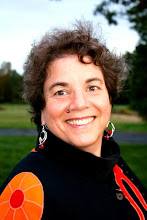This is my second viewing of Food Matters. It basically talks about how the foods we eat make us sick.
Since World War II our food has undergone a huge change. Less often do we eat food that is grown naturally, freshly picked, and served with minimal preparation. Instead our foods are routinely fumigated by pesticides, fungicides, herbicides while bathed in a sea of man-made fertilizers. Once picked it travels long distances and sits on shelves before being purchased. Or it is processed into packaged items that contain an abundance of calories but few nutrients.
When we eat such foods, acid forms. All disease thrives in an acid medium. Sugar, processed carbohydrates, and all animal derivatives including meat, fish, poultry, eggs, and dairy products stimulate lots of acid in our bodies, unlike most vegetables and fruits that leave an alkaline ash.
Our bodies are designed to operate slightly alkaline. So when we consume acid forming foods, we tax our bodies to remain alkaline under the onslaught of acid waste. What does it do?
- Stores excess acid in the muscles, which gives rise to fibromyalgia.
- Creates plaque and cholesterol on arterial walls.
- Produces adipose fat cells causing weight gain.
- Causes blood to clot.
- Stores extra water to help neutralize the acid (edema).
- Induces hot flashes, sweating, and rashes in an effort to expel the acid.
- Develops colds, and other immune responses to get rid of the excess acid.
- Draws alkaline minerals like calcium from tissues, bones and teeth in an effort to neutralize the acidity (causing osteoporosis and receding gums).
When the body is unable to get rid of sufficient acid, decay begins to literally decompose the body. Yeast overgrowth, bacteria and parasites are not something a person catches, but something a person creates and invites into their body when they fail to maintain proper pH within the colon.
Because of our farming practices, most produce lacks the full range of minerals in the soil. If the plant doesn't absorb these minerals, obviously neither can we who consume the plants. Yet the medical industry warns us about the dangers of supplementation.In the last 23 years there have been exactly 10 recorded deaths due to the intake of vitamins. In that same time period, the deaths due to taking properly prescribed medications is more than 250,000.
When we cook foods, the enzymes are changed. Rather than interpret the substance as nourishment, the body reacts to cooked food by seeing it as a foreign invader. Our immune system rushes to our rescue!
The good news is that if the majority of our diet is living foods, uncooked, unprocessed, full of life-giving vitality, then the immune system doesn't sound the alarm.
Breakthough is a documentary about a family that is raising its children on a diet that consists of living foods. I enjoyed this artistic, athletic, intelligent family as it boldly asserts their right to choose how to live (and how to eat). Several members of the extended family joined the nuclear group and ate raw. The results? lose of weight, gained vitality.
Check out these documentaries:
www.foodmatters.tv
www.thegardendiet.com
Viewing them may help you make the most important decision in your life: whether to age rapidly or not; whether to court illness or health.
